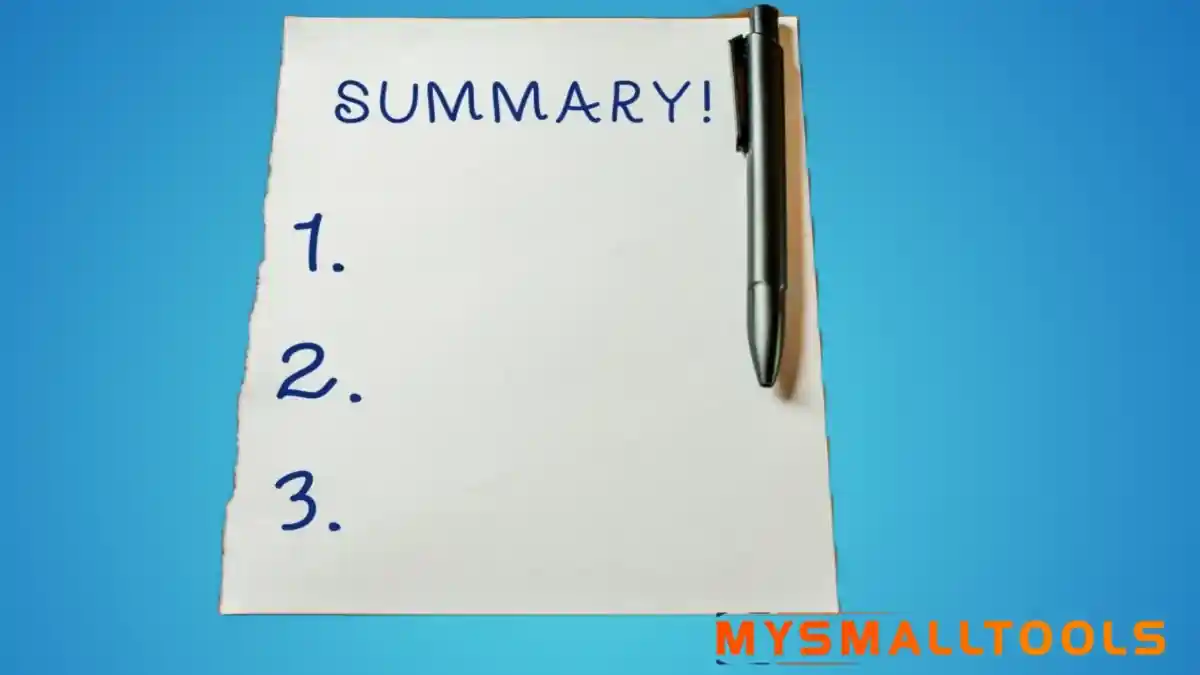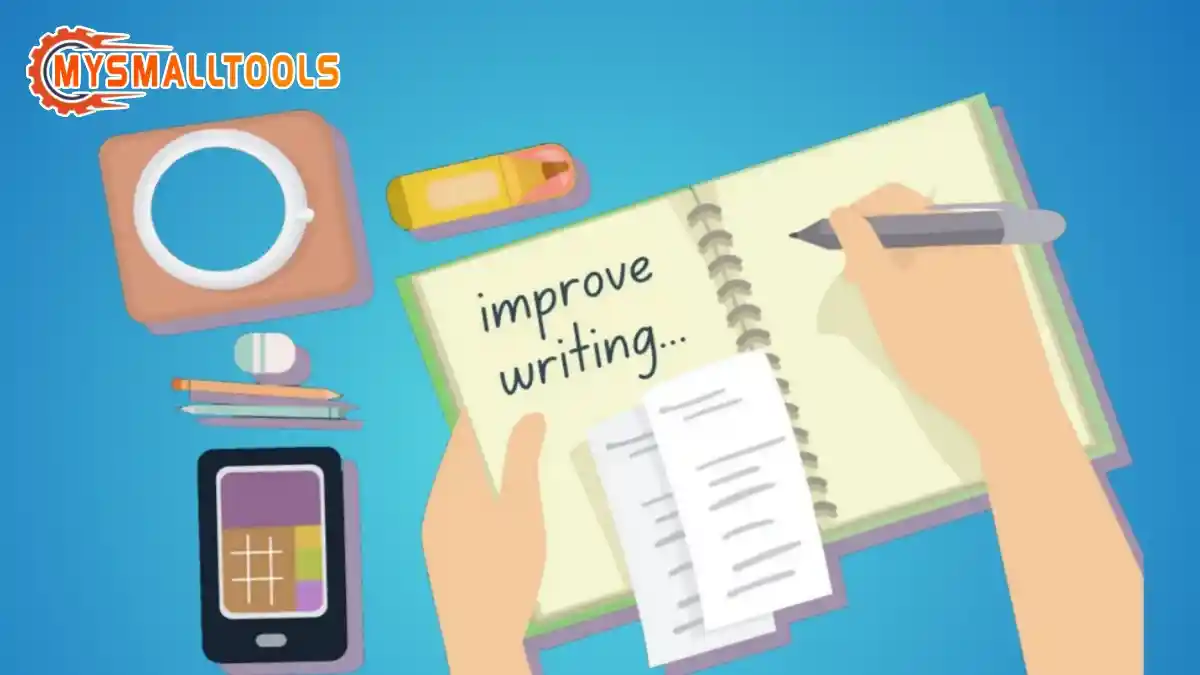Summarizing abilities enable individuals to condense large volumes of information into clear and concise points. In educational environments, honing this skill allows one to encapsulate the core themes of lengthy articles or intricate theories, enhancing both learning and communication efforts.
Professionals utilize summarization techniques to extract essential insights from extensive reports and documents, which are crucial for informed decision-making and streamlined operations.

As you refine your summarization skills, you improve your capability to comprehend and express important ideas quickly and coherently, a necessity in both academic and professional contexts.
What is Summarizing?
The process of reducing a lengthy text to its essential elements so that the key ideas can be quickly and effectively understood is known as summarization. Quality summaries preserve the original message’s essence, presenting a clear overview without going into exhaustive detail.
This ability is vital in navigating information overload, allowing both students and professionals to assimilate and communicate essential ideas with accuracy.
Key Elements of a Summary
Developing an effective summary requires both precision and expertise. It involves stripping down complex information to its core points while maintaining the original context. Here are key aspects to consider:
Also Read
- Conciseness: Aim for brevity while ensuring that all vital elements are included.
- Clarity: Use straightforward language to facilitate understanding.
- Objectivity: Retain the intent of the original text, steering clear of personal interpretations.
- Accuracy: Ensure that the summary faithfully represents the source material, avoiding any misrepresentation.
How To Summarize a Paper
Getting the hang of summarizing academic papers is a crucial skill for both students and researchers, allowing for an efficient understanding of the study’s main concepts without diving deep into every detail.
1. Engage in Active Reading
Rather than merely skimming through the paper, read actively by marking, highlighting, or jotting down notes in the margins. Focus on identifying key concepts, methodologies, and the primary findings presented by the author(s). Special attention should be given to the introduction, which frames the research question and provides pertinent background information, highlighting the significance of the study.
2. Analyze the Structure of the Paper
Research papers generally adhere to a conventional format. The introduction lays the groundwork, the methodology details the research process, and the results section conveys the data obtained. Finally, the discussion interprets the outcomes, assesses their implications, and mentions any limitations. As you engage with the text, note how each section contributes to addressing the overarching research question.
3. Extract the Key Insights
After familiarizing yourself with the paper’s structure and content, it’s time to distinguish the crucial elements from the supplementary information. Consider these pivotal questions:
- What is the main research question that the author or authors are trying to answer?
- Why does this matter?
- What research methods were utilized for data collection (such as surveys or experiments)?
- What were the most notable findings of the research?
- How do the authors interpret these findings, and what are the wider implications of their work?
4. Create a Unified Summary
Having gathered the essential components, it is now time to combine them into a brief yet informative overview. Utilize your own language to steer clear of any issues with plagiarism while aiming for both clarity and brevity.
Your summary should distill the fundamental aspects of the paper, ensuring it clearly presents the research question, the methods used, the main findings, and the authors’ conclusions. The length of your summary will vary based on specific guidelines, such as a single-paragraph abstract for a literature review or an extensive multi-page report for an academic assignment.
Improve and Refine Your Summary

The concluding stage is essential. Thoroughly review your summary to make certain it accurately represents the original document without including your personal views or biases. Verify factual accuracy, grammatical correctness, and the logical progression of ideas.
An effectively composed summary should stand alone, clearly conveying the core message of the research paper.
How to Summarize a Story
Creating an effective story summary means distilling the plot down to its crucial points while preserving the essence of the tale. This process is an excellent way to evaluate your understanding and communicate the heart of the story without divulging all its specifics.
1. Identify the Main Characters and Setting
Begin by laying the groundwork of the story. Who are the primary characters, and how are they related? Provide a brief introduction to them and outline the context in which the narrative takes place. This preparation lays the foundation for what comes next.
2. Understand the Central Conflict: What Drives the Story?
Every narrative is built around a main conflict, which presents a challenge for the protagonist. This may manifest as an external threat, such as an antagonist or a perilous scenario, or as an internal struggle, such as a moral quandary or a quest for personal development. Grasping this conflict is essential to summarizing the story’s essence.
3. Outline the Key Plot Events in Order
After identifying the conflict, pinpoint the crucial events that drive the narrative forward. These key moments are not trivial but represent turning points that heighten the tension, compel the protagonist to make pivotal choices, or lead toward the conflict’s resolution. Summarize these significant events in the order they occur.
4. Climax: The Highest Point of Stress (But Don’t Give Away the End!)
The climax represents the highest point of tension in the story, where the conflict escalates to its most critical level. Offer a brief description of this pivotal moment without disclosing how the story concludes.
5. Conclude: Allude to the Resolution (Without Giving Everything Away!)
The final portion of your summary should suggest the outcome—did the protagonist overcome their challenges? Did they fulfill their aspirations or gain insightful lessons? However, be cautious to avoid giving explicit details that might spoil the narrative for those who haven’t read it yet.
How to Summarize a Book
Summarizing a book involves distilling extensive information into a concise and informative format. It’s akin to crafting a miniature version that encapsulates the book’s core themes without getting lost in every intricate detail.
1. Engaging in Deep Reading and Note-Taking
Move beyond merely reading the book. Involve yourself with the text by highlighting essential points, writing notes in the margins, or making a separate document to record your reflections. Concentrate on identifying the main characters, the principal conflict that drives the narrative, and notable themes that are examined throughout the text.
2. Analyze the Book’s Structure
Many novels adhere to a common format. Key characters are introduced in the opening, which also sets the scene for the story. As the plot develops, the main conflict arises, driving the characters on their respective journeys.
The peak of the story showcases the most gripping moment of tension, followed by a conclusion that resolves open threads or leaves aspects open to interpretation. While taking notes, pay attention to how each section of the book interconnects, contributing to a unified narrative.
3. Distill the Essential Components
After you’ve read the book and grasped its structure, it’s time to sift through the details.
Pose essential questions:
- Who are the pivotal characters, and what drives them?
- Which major conflict drives the plot?
- Which major occurrences shape the narrative, and how do they affect the characters?
- What themes are explored by the author?
4. Create a Concise Summary
Now that you have pinpointed the book’s essential components, blend them into a clear and cohesive summary.
1. Start with a brief introduction that includes the book’s title, author, and its genre.
2. Introduce the main characters along with the setting.
3. Describe the main conflict that advances the story.
4. Summarize the key plot developments while highlighting transformative moments and significant events. (Avoid revealing major plot twists!)
5. Provide a hint regarding the resolution without disclosing the conclusion.
6. Touch upon the primary themes of the book.
Edit and Refine
Carefully review your summary to ensure it faithfully represents the book without expressing personal views. Verify the accuracy of facts, grammar, and the logical progression of ideas.
Your polished summary should stand alone as an effective encapsulation of the book’s essence, leaving readers curious and eager to explore further.
How to Summarize a Report
Reports are packed with information, so summarizing them effectively involves identifying key elements and conveying them succinctly.
1. Understand the Report’s Objective
Before you start, clarify what the report seeks to accomplish. Is it delivering research results, analyzing a business scenario, or offering policy suggestions? Grasping the purpose aids in pinpointing the most crucial information.
2. Adhere to the Structure: Organization is Essential
Reports generally follow a coherent structure. Look for headings and subheadings that arrange the content methodically. Pay special attention to sections such as:
- Introduction: This section establishes the framework by detailing the objective of the report, giving essential context, and presenting the research question or issue at hand.
- Methodology: This part describes the approach taken for the research, including any data collection methods or analysis techniques employed.
- Findings: Serving as the core of the report, this section reveals the outcomes and significant discoveries made during the research.
- Discussion: Within this section, the author analyzes the findings, discussing their implications and drawing insightful conclusions.
- Recommendations: This segment may outline potential solutions or advise actions based on the analysis presented.
3. Identifying the Key Insights:
Take into account the following crucial queries as you examine the report’s structure in order to identify its main elements:
- What is the main question or research issue being addressed?
- Which techniques were utilized to obtain data or execute the analysis?
- What are the most crucial discoveries made in the report?
- How does the author make sense of these findings, and what conclusions are drawn?
- Are there any future action proposals or recommendations?
4. Crafting a Comprehensive and Concise Summary:
After pinpointing the fundamental information, integrate it into a structured summary.
1. Begin with a short introduction that includes the title of the report, the author’s name, and the main objective.
2. Provide a succinct overview of the research question or problem being examined.
3. Summarize the methodology, emphasizing the ways in which data was gathered or analyzed, without going into excessive detail.
4. Clearly and concisely present the key findings of the report.
5. Highlight the author’s primary conclusions stemming from those findings.
6. If relevant, include any proposed recommendations or suggestions for future initiatives.
5. Ensuring Precision and Neutrality:
Carefully review your summary to guarantee that it faithfully reflects the content of the report without infusing your personal views or biases. Verify factual accuracy, grammar, and the logical progression of ideas.
How to Summarize an Essay:
Effectively summarizing an essay is a useful skill for students and anyone engaging with scholarly writing. It enables you to quickly understand the main arguments and evaluate the content without being overwhelmed by every detail.
1. Beginning with Engaged Reading:
Rather than simply skimming through the essay, undertake a thorough reading, marking important points and jotting down notes in the margins. Concentrate on capturing the central argument, the supporting evidence, and any opposing viewpoints the author addresses.
Pay special attention to the thesis statement, usually found in the introduction, which summarizes the primary argument of the essay.
2. Analyzing the Essay’s Framework:
Most essays adhere to a conventional structure. The topic is introduced, relevant background information is provided, and the thesis statement is stated in the introduction. The body paragraphs explore specific points that reinforce the thesis, supported by evidence like facts, statistics, or quotes from reliable sources. The thesis statement and the main points are restated in the conclusion, which also occasionally offers the author’s closing thoughts or the argument’s broader ramifications.
3. Recognize the Essential Components
After you have a clear understanding of the essay’s structure and its main ideas, it’s time to discern the important details from the less significant ones. Consider asking yourself the following critical questions:
- What is the thesis statement, or main idea, that the author wants to convey?
- Which pieces of evidence does the author utilize to back up their claim?
- Does the author consider any alternative viewpoints or counterpoints? If they do, how are these addressed?
4. Develop a Coherent Summary
Having pinpointed the essential components, your next step is to weave them into a clear and concise summary.
- Begin with a brief introduction that includes the essay’s title and the author’s name.
- Present a straightforward declaration of the essay’s primary argument (the thesis statement).
- Summarize the key points that support this thesis, highlighting the most critical pieces of evidence provided by the author.
5. Edit and Refine Your Summary
This final step is essential. Carefully review your summary to make sure it accurately mirrors the content of the essay while ensuring that your personal opinions and biases do not seep in. Verify the factual correctness, grammar, and the logical progression of ideas.
An effectively constructed summary should stand on its own, clearly communicating the core of the essay’s argument.
Enhancing the Art of Summarization
Acquiring the skill of summarizing is crucial as it boosts your comprehension, communication, and efficiency, whether in academic settings, professional environments, or everyday situations.
By honing your summarization abilities, you can skillfully distill complex information into its most vital parts. This skill not only saves time but also enhances your understanding and enables clearer, more effective communication.
As you practice, you will notice improvement in your capability to identify essential points in dense texts, along with the ability to convey these ideas concisely to others. This skill will benefit you across all areas of your life, helping you become a more proficient student, an effective professional, and an articulate communicator overall.


